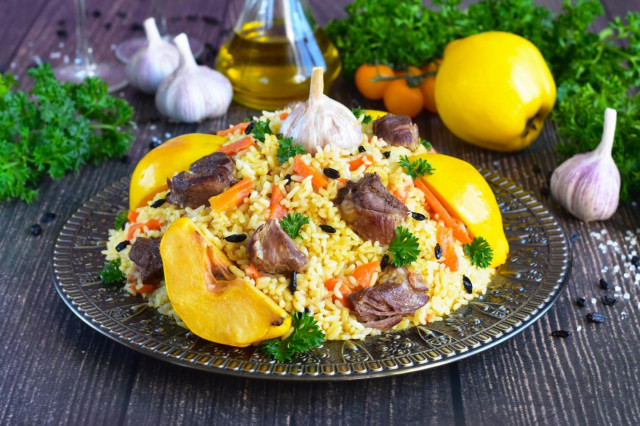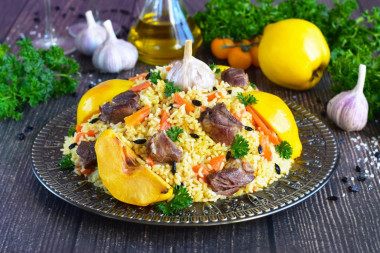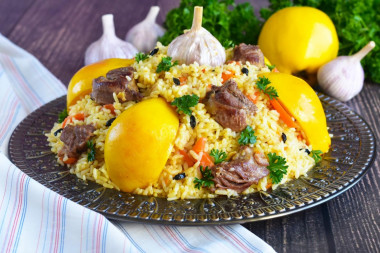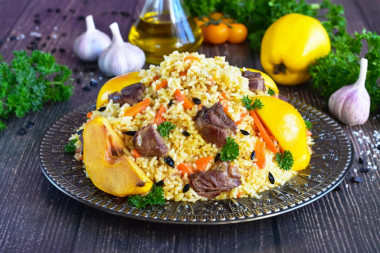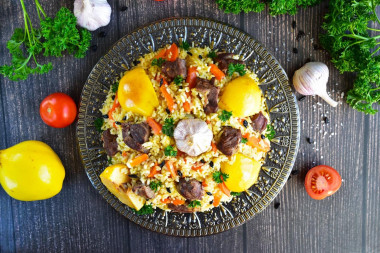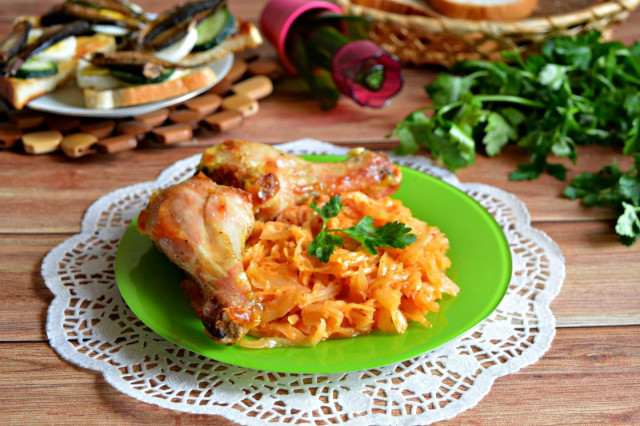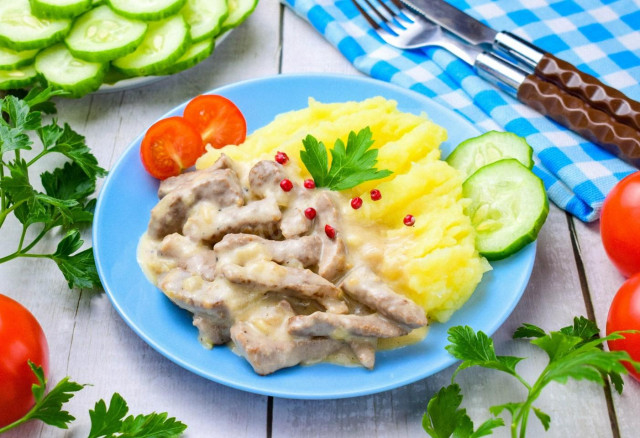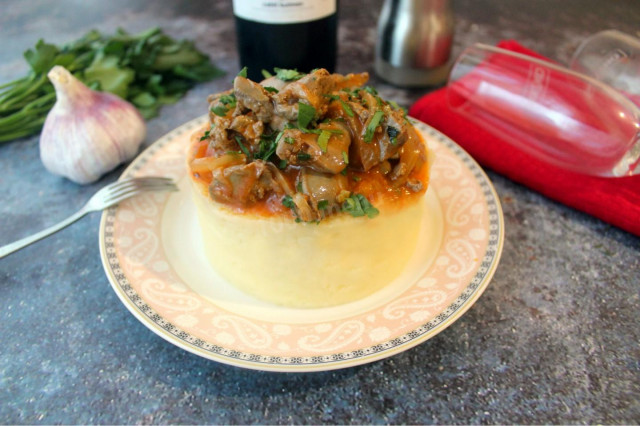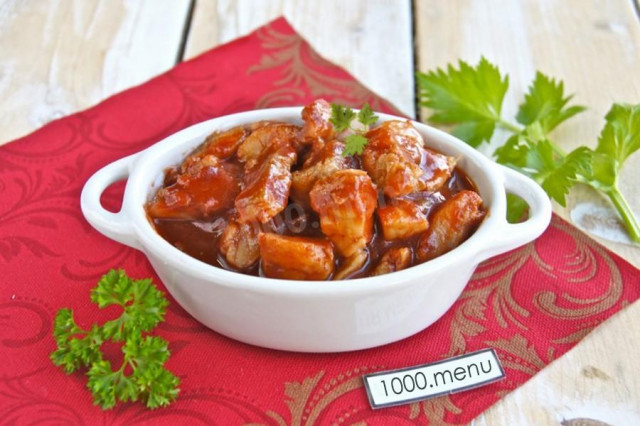Composition / ingredients
Step-by-step cooking
Step 1:
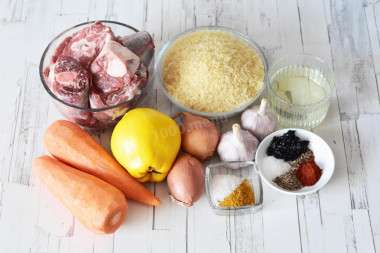
How to make pilaf with quince and meat in Uzbek? Very simple. First, prepare the necessary ingredients according to the list. Pilaf can be cooked without barberry, but we cook with these ingredients - it gives the dish a flavor and a slight sourness. In general, these spices can be replaced with 1-2 tablespoons of ready-made spices for pilaf.
Step 2:
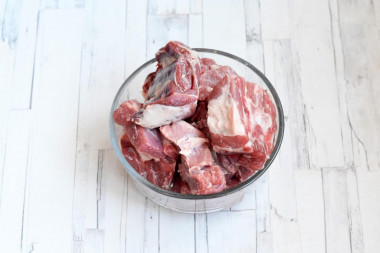
Wash the lamb, cut into large pieces.
Step 3:

Rinse the rice to clean water, add a little salt, pour warm water and leave for 30 minutes. Soaking rice before cooking will protect it from boiling. You can use any rice. You can use a special one for pilaf, but other varieties are also suitable, it is only important that the cereal is steamed, then it will retain its shape and not boil. I have golden steamed rice.
Step 4:

Then drain the water.
Step 5:

Peel the carrots and cut into strips.
Step 6:
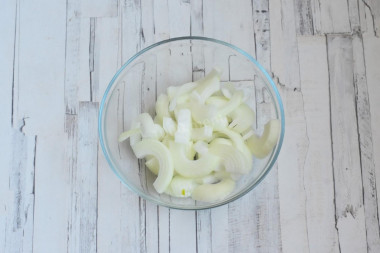
Peel the onion and cut into half rings.
Step 7:
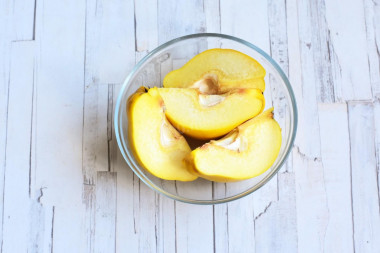
Wash the quince and cut into large slices. I just cut the fruit into 4 parts.
Step 8:
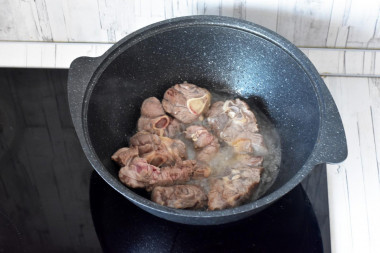
Heat vegetable oil in a cauldron. Lay out the meat and fry over high heat, stirring occasionally, for 10 minutes until golden brown.
Step 9:
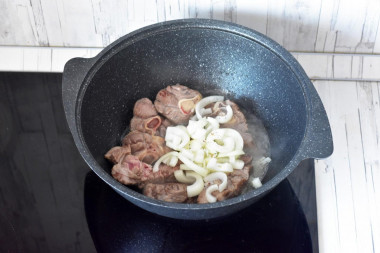
Add onion. Sprinkle it with ground black pepper and salt.
Step 10:
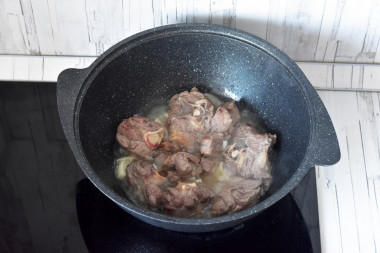
Mix everything so that the meat is on top and the onion is on the bottom. Fry the onion with meat for 7-8 minutes.
Step 11:
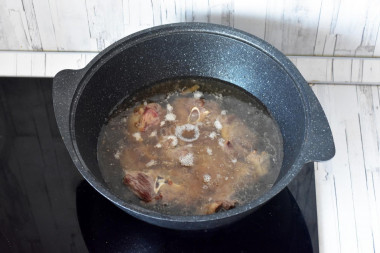
Pour in hot water so that it completely covers the meat with onions.
Step 12:

Bring to a boil and simmer under a lid for about 30 minutes.
Step 13:
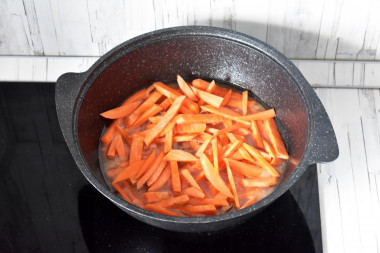
Mix everything, spread the carrots evenly and simmer for another 15 minutes.
Step 14:
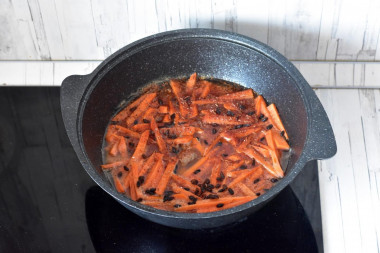
In the palm of your hand, mix cumin, barberry, paprika, salt and ground pepper. Sprinkle spices evenly over the contents of the cauldron.
Step 15:

Spread the quince slices on top. Simmer for 2-3 minutes.
Step 16:
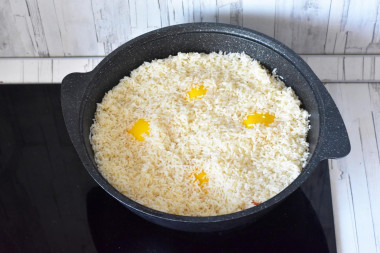
Put the rice in an even layer on the meat.
Step 17:
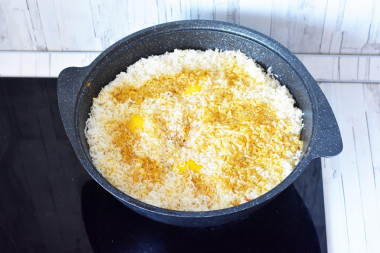
Sprinkle the rice with turmeric and 1 tbsp salt on top.
Step 18:

Pour hot water so that it rises 2-3 cm above the rice level. Cover the cauldron with a lid and bring the water to a boil over medium heat.
Step 19:
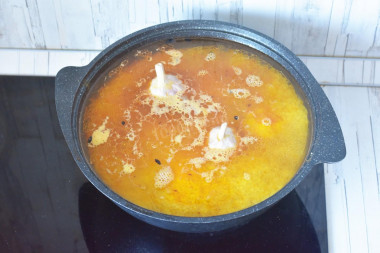
Stick whole washed garlic cloves into the rice. Cook the pilaf under the lid for 15-20 minutes
Step 20:
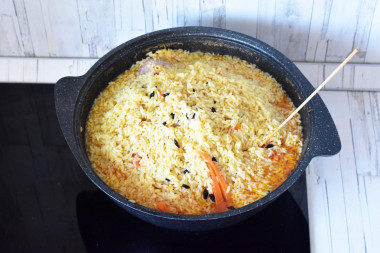
Then use a slotted spoon to collect the rice in the center and make deep punctures in the pilaf with skewers.
Step 21:

If there is no water in the cauldron, reduce the heat to minimum. Wrap the lid with gauze and cover the cauldron with it. Simmer the pilaf for 10-15 minutes. If there is still water in the cauldron, wait until it evaporates and then cover the cauldron with a lid
Step 22:
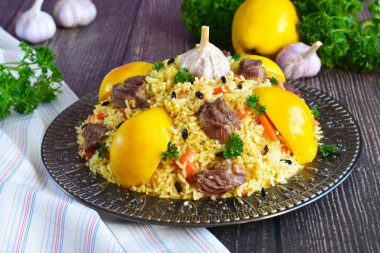
Put rice and carrots on a platter. Cut the pieces of lamb into small pieces and put them on pilaf. Garnish with garlic heads and quince slices. Bon appetit!
Any oils are useful only until a certain temperature is reached - the point of smoking, at which the oil begins to burn and toxic substances, including carcinogens, are formed in it. How to determine the roasting temperature and choose the best oil for frying, and which one is better not to use at all, read here .
Since the degree of salinity, sweetness, bitterness, sharpness, acid, burning is individual for everyone, always add spices, spices and seasonings, focusing on your taste! If you put some of the seasonings for the first time, then keep in mind that there are spices that it is especially important not to shift (for example, chili pepper).
You can use any other meat instead of lamb, but keep in mind that the cooking time and calorie content will change in this case.
Caloric content of the products possible in the composition of the dish
- Onion - 41 kcal/100g
- Lean mutton - 169 kcal/100g
- Fat mutton - 225 kcal/100g
- Lamb - brisket - 533 kcal/100g
- Mutton - ham - 232 kcal/100g
- Lamb chop on a bone - 380 kcal/100g
- Lamb shoulder - 284 kcal/100g
- Mutton - dorsal part - 459 kcal/100g
- Raw wild rice - 353 kcal/100g
- Brown raw rice - 360 kcal/100g
- Boiled brown rice - 119 kcal/100g
- White fortified raw rice - 363 kcal/100g
- Fortified boiled white rice - 109 kcal/100g
- White rice, steamed, with long grains raw - 369 kcal/100g
- Steamed white rice, boiled with long grains - 106 kcal/100g
- Instant dry rice - 374 kcal/100g
- Instant rice, ready to eat - 109 kcal/100g
- Fig - 344 kcal/100g
- Carrots - 33 kcal/100g
- Dried carrots - 275 kcal/100g
- Boiled carrots - 25 kcal/100g
- Garlic - 143 kcal/100g
- Quince - 40 kcal/100g
- Turmeric - 325 kcal/100g
- Ground black pepper - 255 kcal/100g
- Zira - 112 kcal/100g
- Vegetable oil - 873 kcal/100g
- Barberry - 29 kcal/100g
- Salt - 0 kcal/100g
- Paprika - 289 kcal/100g

